- Bernard Preston homepage
- Stunting of children
- Stunting Story Suggests Scenarios to Restore Harmony and Balance
Stunting story suggests scenarios to restore harmony and balance
Part V of our Stunting Story suggests scenarios to restore harmony and balance in the war between those simply profiteering from ultra-refined foods and nutritionists alarmed by the declining health of our children.
We started this series on stunting by saying that every moving story has two parties, one doing its utmost to restore harmony and balance; and the other, sometimes unwittingly is made up of powerful forces often shaped by ignorance or greed, determined to keep things out of kilter.
We discussed how government’s policy of centralised school nutrition has been a complete disaster; it could have been no other way. Recently two million pupils, mostly from impoverished families were profoundly affected when the contractor failed to supply the (second rate, ultra-refined) pseudo food and the Education Department cancelled the deal.
The sum involved was over R2 billion rand. Will government continue to throw good money after bad?
 Kwashiorkor
KwashiorkorThere has been much in the media recently how NGOs have helped schools establish their own gardens, integrating the academic curriculum with what was happening right on their doorsteps. Children are learning to measure out the length of a row, how many millimetres deep a seed should be planted and the distance between plants.
How many millilitres of water each plant needs and the number of kilos in a tank. They weigh out the potatoes lifted and the beans harvested, learning basic arithmetic not from a textbook but by doing.
They learn how carbon can be sequestered from the atmosphere by a compost heap and the microorganisms that bring about decay; the vermiculture in a worm farm and the power of humus enabling the growing plant to harvest minerals and water more effectively from the soil.
Could parents bring a bucket of cow manure or a bag of grass cuttings for mulch when they drop off their children at school?
They learn about the power in a tiny seed, the mystery of creation, as they plant mealies and then watch the sheer magic of little shoots that soar into towering giants; concerning pollen, stigmas and stamens. Stalk-borer control, weeding and hoeing are not simply onerous tasks for the very poor; and how delicious, satisfying food can be grown without toxic ecocides.
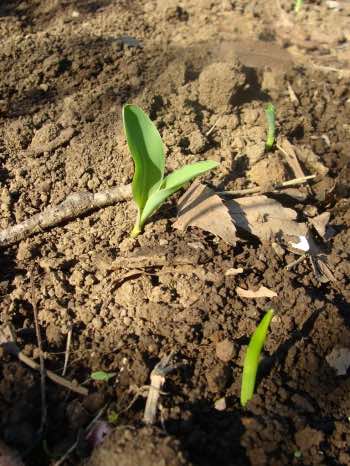 Corn seedlings grow into towering giants
Corn seedlings grow into towering giantsThey can study first rudiments of engineering; the power of the stays that keep the maize plant like an electricity pylon upright; the science of pollination and the simplicity of keeping back some of your own seed for planting in the next season.
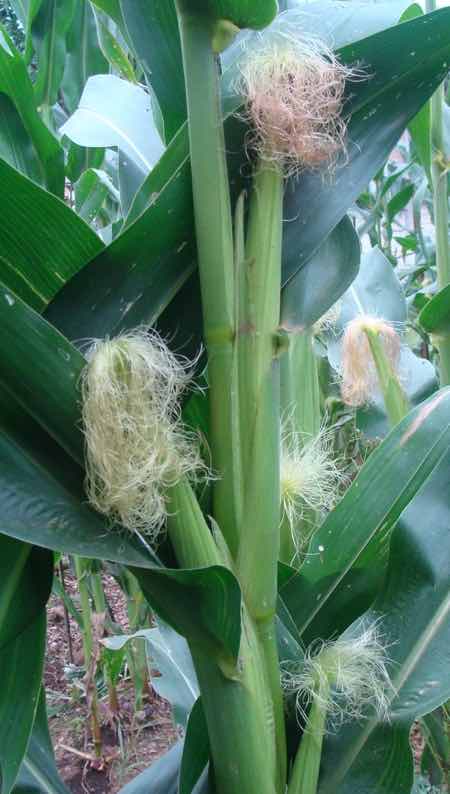
They can learn about diseases like cholera carried by water and how for millennia humans have stored the pristine rain in cisterns; about wells and wetlands. They can study the first rudiments of chemistry, how alkyl halides and pesticides attack the nervous system; how America and even more so China have made fatal flaws in planning by allowing toxic compounds to poison first their rivers and then their brains.
One in an astonishing four Chinese adults over 65 will within a few short years be dying from the fastest growing brain malady in the world[4]; Parkinson’s disease. And how South Africa is all set to follow this monumental blunder of so-called civilisation; it is possible to protect ourselves.
Children can learn how the disciplines of life, like weeding a row of carrots can become a time of stillness rather than a chore; of connecting with the divine. It's our variation of what is generally known as forest bathing.
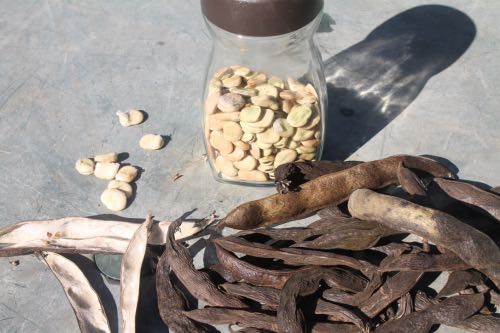 Collecting dry broad bean seeds
Collecting dry broad bean seedsBy connecting with Mother Earth harmony and balance can be restored to their lives, not by some distant billionaire trucking in third grade polished rice from the East but in their school gardens. And taking the lessons learned back to their own homes.
Stunting story suggests scenarios to restore harmony and balance to our lives.
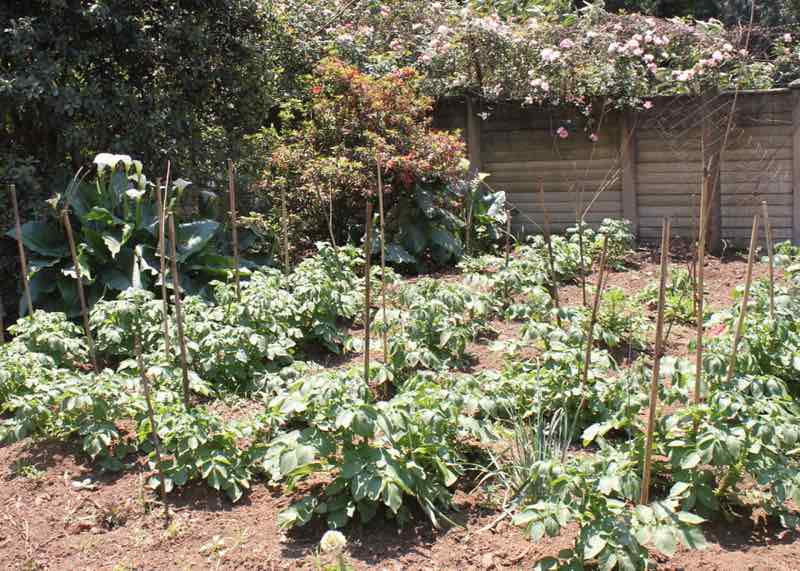 Grow your own potatoes for starch
Grow your own potatoes for starchNew potatoes are rich in resistant starch; much reaches the colon supplying nutrients for the microbiome. They have a far lesser effect on blood glucose[2].
Growing legumes
Growing legumes in the home garden is not difficult, neither would it be in schools. They supply dietary protein; and important vitamins, minerals and phytonutrients. More, they could provide an income for families and because of their ability to fix nitrogen from the atmosphere, replenish soil fertility obviating the need for fertiliser.
Beans and peas can with ease be grown year round for hungry, starving stomachs and stunted bodies; the start made in school gardens and the knowledge carried home.
Our favourite is the broad bean because it is the only legume that can supply all nine of the essential amino acids; it’s a complete protein like milk, eggs and meat. And they are prolific, each plant providing a huge amount of food for months.
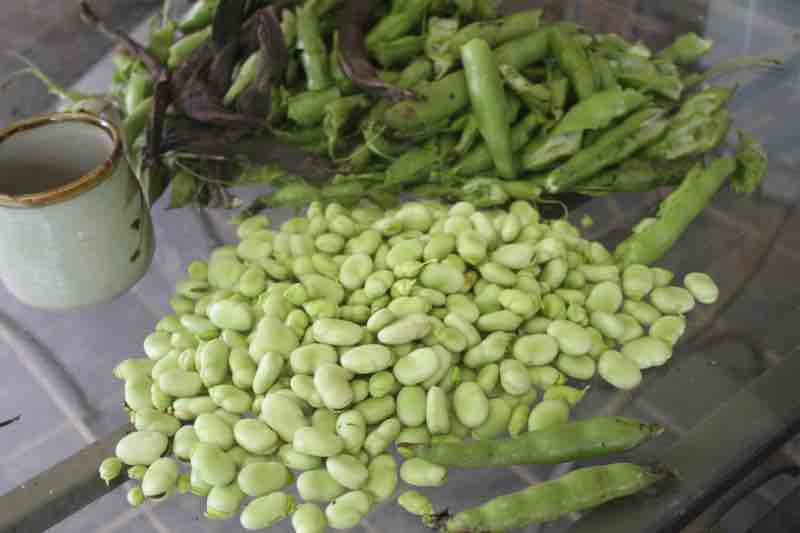 Broad beans left from just two plants at the end of the season
Broad beans left from just two plants at the end of the seasonBy connecting with legumes in the garden, children can learn about the gases in the air; how rhizobia bacteria attached to the roots of beans and peas capture the nitrogen in the atmosphere for the amino acids that form our protein. And study the divine process of photosynthesis that takes carbon dioxide and water, releasing life-giving oxygen for us and all animals.
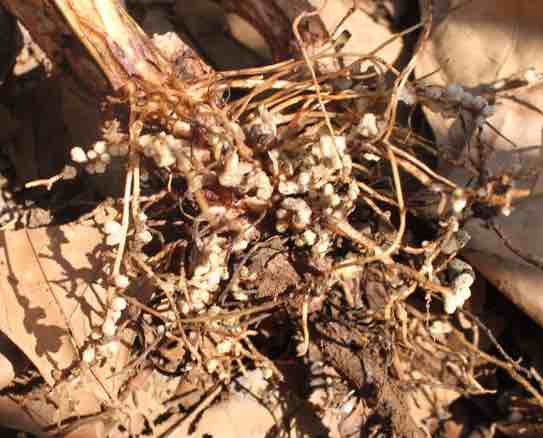 Rhizobia nodules on the roots of legumes capture nitrogen
Rhizobia nodules on the roots of legumes capture nitrogenThis is not just hot air; at Our Green Home we have walked the talk. We enjoy green climbers and limas in the summer, broad beans and peas in the winter; every single day of the year from a suburban garden.
The message
The message needs to be proclaimed loudly and clearly; don’t buy your food, grow it.
It’s of great significance that both China and Ethiopia have cottoned onto the benefits of the broad bean; they have become the largest growers in the world. Could the humble fava as it is called in many countries be part of the reason that Ethiopian Air has flourished and SAA finds itself in the doldrums?
All it would take would be for each and every hungry family to plant six seeds per member. They do require considerable attention; staking, tying and regular watering. Is it too much to ask unemployed starving people to spend half an hour each day tending their beans and carrying buckets of water from the shower or stream to the garden? In return they will have a complete protein for nearly six months of the year; longer if they freeze the surplus.
And then many other legumes could be grown year round; the common green climbing bean, limas and peanuts, for example. All have their own unique nutrients; iron, zinc and calcium. They are also rich in folate, niacin and many other vitamins.
Growing starches
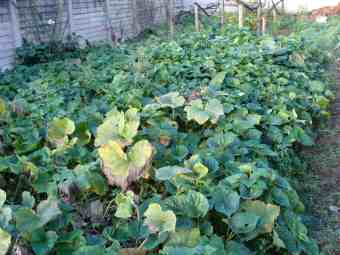 Butternut and sweet potatoes growing together
Butternut and sweet potatoes growing togetherGrowing starches like maize, potatoes and butternut in school gardens would be so simple; and at home. No family should ever go hungry; nor any child be stunted. Building great big compost heaps is part of the deal. Biodegradable material is available everywhere. There are leaves, grass cuttings and vegetation at every corner; manure from goats, chickens and cattle too.
Just one susu plant, also known as chaote squash provided us with 150 gourds this year; we ate one almost every day for seven months. They are absolutely the easiest and most prolific food in Our Green Garden; a true highly-nutritious staple.
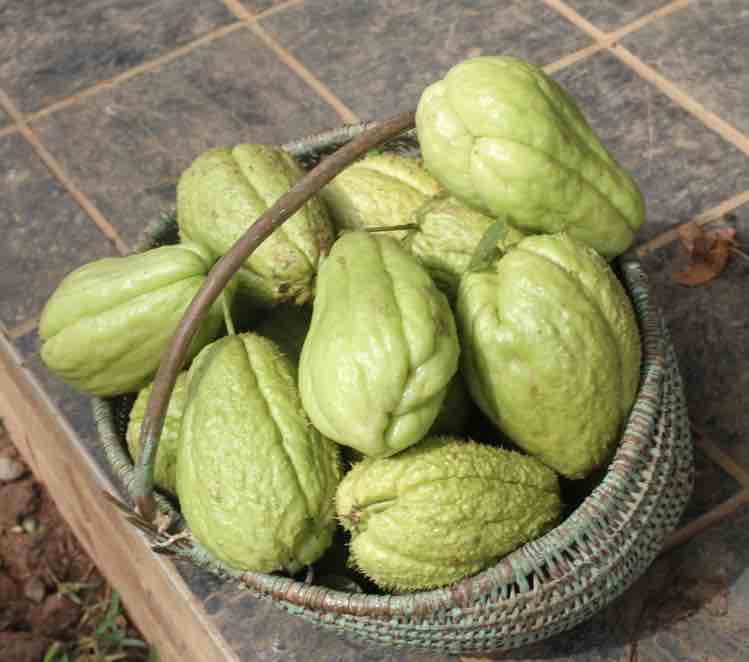
Growing greens
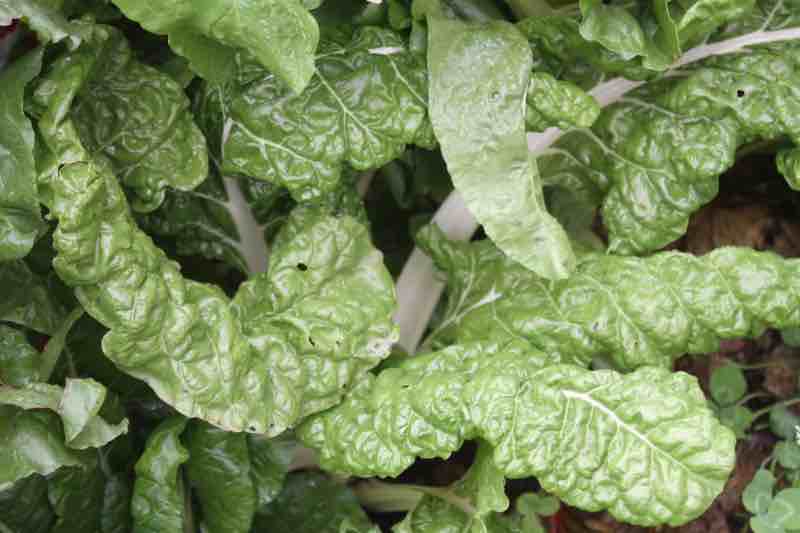
It is so simple to have ample greens from school and home gardens throughout the year. Spinach, kale and broccoli are the mainstays; many varieties of lettuce obviously. Rocket and coriander grow like weeds, in all providing far more than an average family could ever eat. The surplus could be used to feed rabbits and chickens; for meat and eggs.
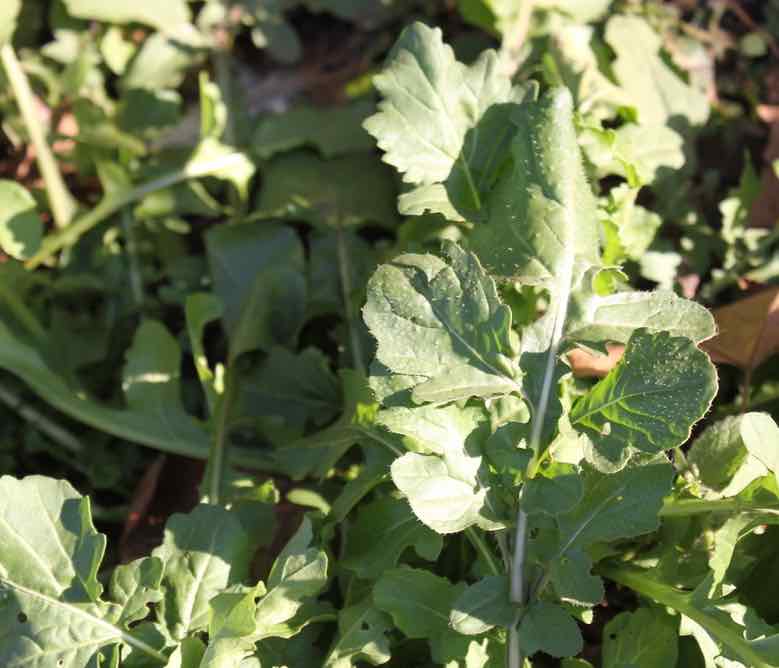 Grow your own rocket aka arugula
Grow your own rocket aka arugulaThere is absolutely no reason why even one child should be hungry; and stunting could be a matter assigned to history. But which of the two forces at work will overcome? At present greed, lack of knowledge and sheer laziness are winning hands down.
All of this is counter big business. They want us to buy food from supermarkets, seeds in little packets and fertiliser in bags; at a huge markup in price and an equally massive drop in nutrient value. It's time to protect ourselves from the serious diseases caused by ecocides; and the additives use to flavour and preserve our refined meals unto everlasting life.
Stunting story suggests scenarios to restore harmony and balance
Stunting story suggests scenarios to restore harmony and balance; the success of all nations lies in the hands of their children. Without good food for their kids countries will inevitably become places without hope or a future.
- The stunting story has three elements
- Stunting story and severe food insecurity
- Stunting story weighs hunger versus malnutrition
- Stunting story recommends local mills for freshly-ground grains
- Stunting story suggests scenarios to restore harmony and balance
- Stunting story ponders what government could do
When browsing use right click and "Open Link in New Tab" or you may get a bad gateway signal.
Newsletter
Our newsletter is entitled "create a cyan zone" at your home, preserving both yourself and Mother Earth for future generations; and the family too, of course. We promise not to spam you with daily emails promoting various products. You may get an occasional nudge to buy one of my books.
Here are the back issues.
- Lifestyle and ideal body weight
- What are ultra-processed foods?
- Investing in long-term health
- Diseases from plastic exposure
- Intensive lifestyle management for obesity has limited value
- A world largely devoid of Parkinson's Disease
- The impact of friendly bacteria in the tum on the prevention of cancer
- There's a hole in the bucket
- Everyone is talking about weight loss drugs
- Pull the sweet tooth
- If you suffer from heartburn plant a susu
- Refined maize meal and stunting
- Should agriculture and industry get priority for water and electricity?
- Nature is calling
- Mill your own flour
- Bake your own sourdough bread
- Microplastics from our water
- Alternative types of water storage
- Wear your clothes out
- Comfort foods
- Create a bee-friendly environment
- Go to bed slightly hungry
- Keep bees
- Blue zone folk are religious
- Reduce plastic waste
- Family is important
- What can go in compost?
- Grow broad beans for longevity
- Harvest and store sunshine
- Blue zone exercise
- Harvest and store your rainwater
- Create a cyan zone at your home
Did you find this page interesting? How about forwarding it to a friendly book or food junkie? Better still, a social media tick would help.
- Bernard Preston homepage
- Stunting of children
- Stunting Story Suggests Scenarios to Restore Harmony and Balance
Address:
56 Groenekloof Rd,
Hilton, KZN
South Africa
Website:
https://www.bernard-preston.com